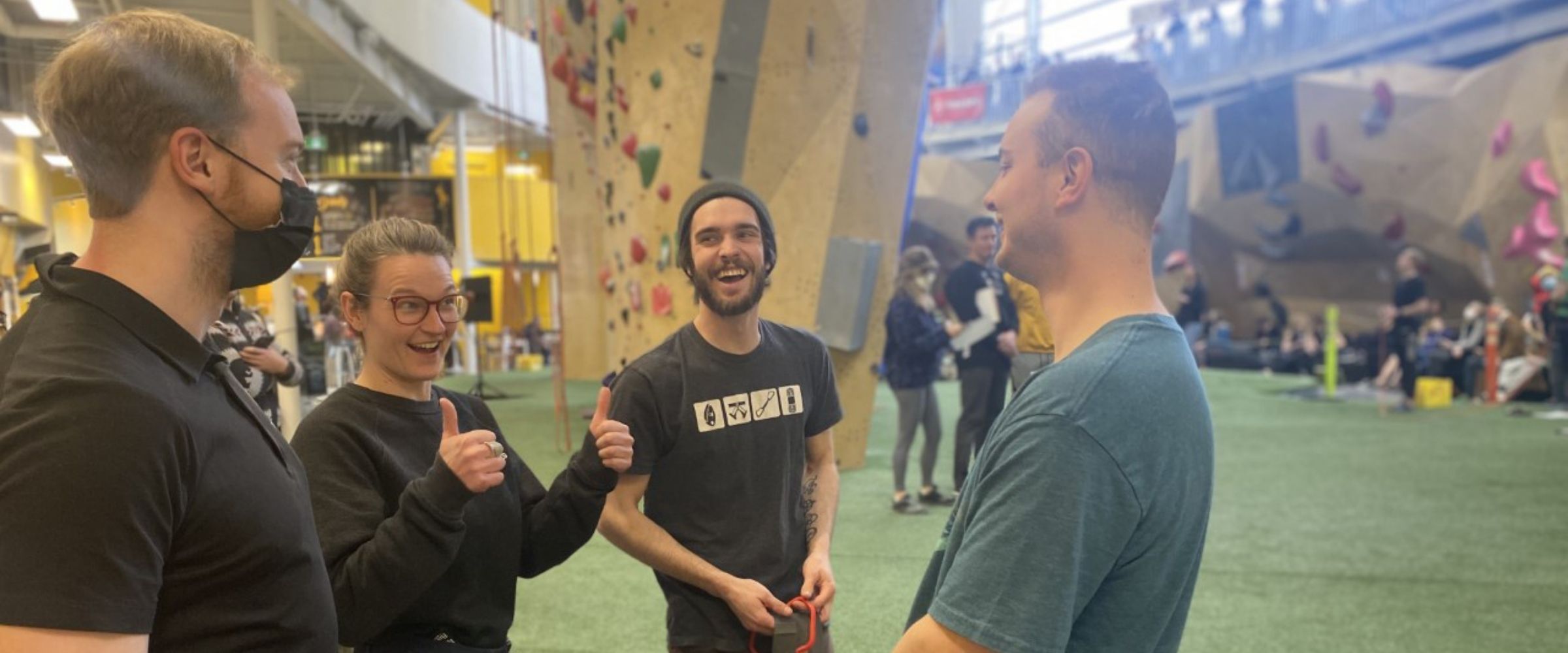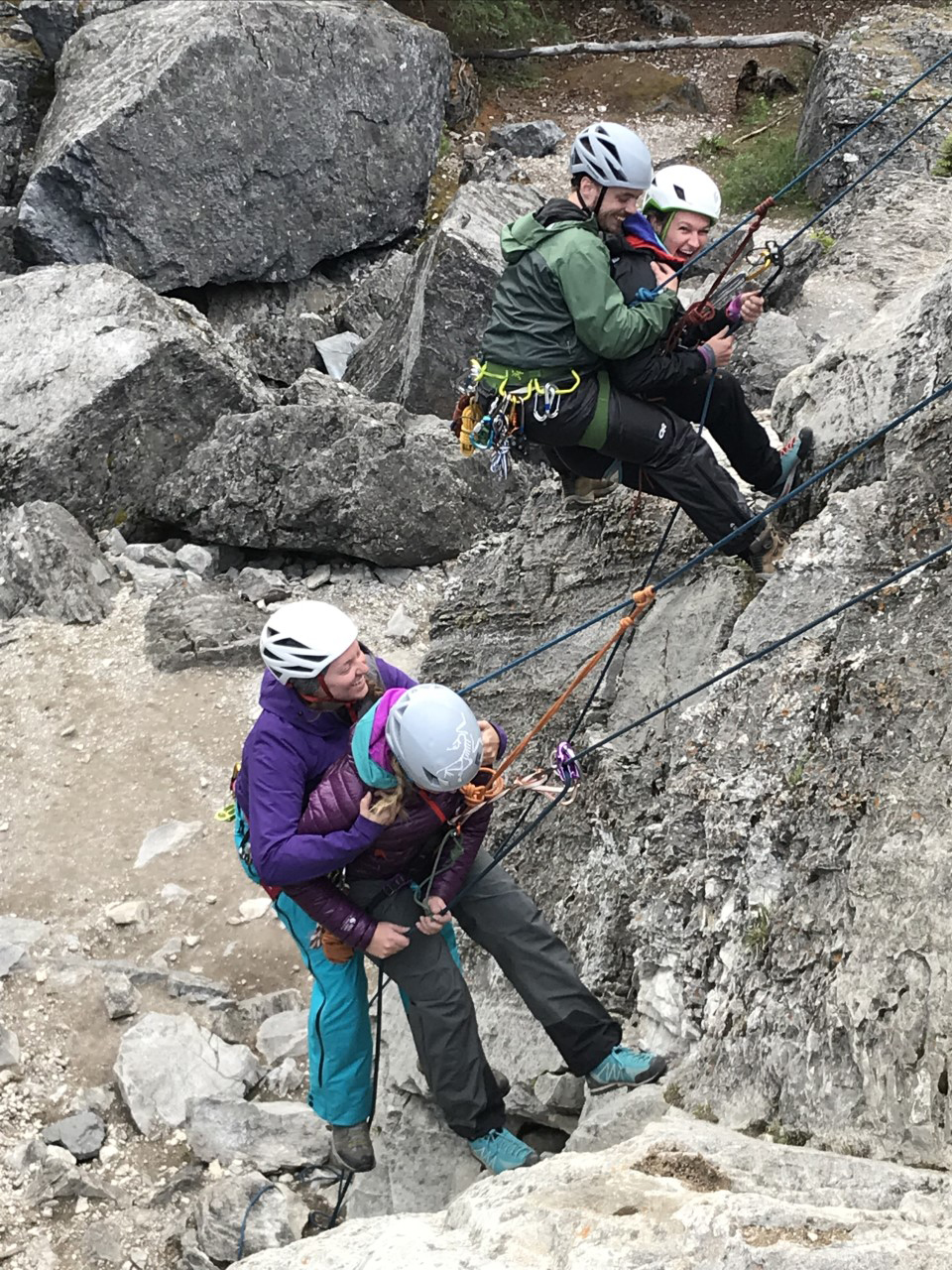Mentoring Your Staff Is Critical and Here's Why: Part II
 Calgary Climbing Centre Facility Manager Ali Obreiter keeping it real and passing on knowledge as the Head Belayer at Alberta Youth Provincials in March 2022. Photo: Brendan Ward
Calgary Climbing Centre Facility Manager Ali Obreiter keeping it real and passing on knowledge as the Head Belayer at Alberta Youth Provincials in March 2022. Photo: Brendan Ward
This is Part II of an article series on mentorship. Don't miss the first one!
If you’re thinking, “mentorship sounds a whole lot like just teaching people stuff” – you’re totally right! But how many teachers or bosses have you had who you would gladly refer to as a mentor? How many of your own staff or coworkers would call you a mentor (without coercion)?
There are some leaders who seem to exude wisdom and naturally take on the ‘mentor status’. In business and leadership, mentorship should be a strategy and skill rather than a personality trait; and as we learned in Part 1, structured mentorships are a great way to ensure inclusion in all forms.
So, what are the strategies to effectively mentor your team?
First of all, be intentional!
You are probably an awesome leader and worker, but don’t expect the nuances to automatically rub off on your team. Know which of your professional qualities and strategies are key to being successful.
Plan mentorship time with your staff, but not necessarily the details; each staff member will be in a different place with their training and career. Spend time working with them as individuals, listening and watching carefully, so that you can provide guidance that is truly helpful.
Mentorship is outcome-driven; it is practical – no one wants to hear generic advice that doesn’t apply to their situation.
You should also be intentional about who is being mentored. Have a plan or structure that outlines who is mentoring who, and in what areas they should be mentored at specific points in their career. This makes the continued training and guidance for staff more ‘automated’, so that you don’t end up mentoring only those you are closest with on your team.
The next step is often the hardest for many leaders but is critical – give up control!
In the mountains, at some point, the mentor hands over the sharp end of the rope to the mentee; and so too must we give up some control of our duties and responsibilities as leaders if we want our staff to learn, grow, and become competent leaders themselves.
READ ALSO: Control Risk in Your Climbing Gym
Let your new staff make mistakes without jumping in immediately to correct them – subtly guide the staff member by asking questions or pointing out issues without just offering the solution. Problem-solving is an excellent way to get knowledge to stick, and in my experience, it also develops my team’s critical thinking skills.
Challenge your experienced staff with tasks above their paygrade. A common theme that I’ve noticed in every industry that I’ve worked in: overwhelmed leaders and underwhelmed front-line staff. If your staff has mastered the basics, they need new challenges to keep them engaged.
Share your workload with them, but don’t dump it on them. The work is still your responsibility as a leader and there is a fine line between mentorship and tyranny. To avoid crossing it, be intentional about what you are sharing and with whom – it needs to be mutually beneficial.
Have an experienced Front Desk staff run a staff meeting and help with management and administrative tasks. Let one of your solid routesetters lead the forerunning session. Have an instructor create or revamp a program. You’ll be guiding and overseeing all of this, but not directing every detail.
The final step ensures that you are being outcome-driven – you need to follow up and assess.
 |
|
Calgary Climbing Centre team members training in the mountains. Photo: Brendan Ward. |
You’ve started by being intentional and setting your desired outcome; you gave up control by giving your staff guidance instead of orders and by sharing your workload to train future leaders…but did it work?
After passing on the sharp end of the rope, the mentor follows their mentee's line up to the next anchor. How was the routefinding? How well was the protection placed? Is the anchor good to go? If you don’t follow up and assess the results of your well-intended mentorship, you won’t know if it worked.
Because you were intentional about what you were trying to impart and who you were trying to impart it upon, follow-up should be straightforward – continue working with, watching, and listening to your staff and see if they are starting to pick up what you’re putting down.
Are new staff ‘getting’ the culture of the organization and problem solving on their own? Are experienced staff starting to act more like leaders – maybe even doing some of their own mentoring of new staff?
If so, keep on keepin’ on! If not, you’ll need to do an honest assessment of where the issue lies…maybe the staff aren’t the right fit for your organization, or maybe you weren’t as inspired as old-man Mentor in the Odyssey when giving your guidance (to be fair, he was ‘possessed’ by a goddess when giving his advice, and you likely don’t have that going for you).
Follow-up, assess, and go back to setting an intentional plan forward. Wash, rinse, and repeat until you get the results you’re looking for.
Good mentorship takes effort – there is a lot of reflecting and planning; the constant work of maintaining effective relationships with your staff; and, of course, time spent guiding your mentees – but if you plan intentionally, are willing to give up some control, and put in the time to follow-up and assess, you can develop a team that will actively help you reach the summit.
Management and leadership skills seem to be notoriously difficult to impart on others. Have frequent meetings with your team – show them how you work, explain your reasoning for decisions and strategies, and give them projects and leadership tasks to take on.
Join Us at the 2024 CWA Summit
About the Author
 Brendan is a Canadian-based climber and a Manager for the Calgary Climbing Centre. He has 10 years of management and leadership experience, and a passion for supporting the climbing lifestyle. With the Rockies as his playground, he is drawn to the incredible ice, alpine, and multipitch lines that define the local landscape.
Brendan is a Canadian-based climber and a Manager for the Calgary Climbing Centre. He has 10 years of management and leadership experience, and a passion for supporting the climbing lifestyle. With the Rockies as his playground, he is drawn to the incredible ice, alpine, and multipitch lines that define the local landscape.
